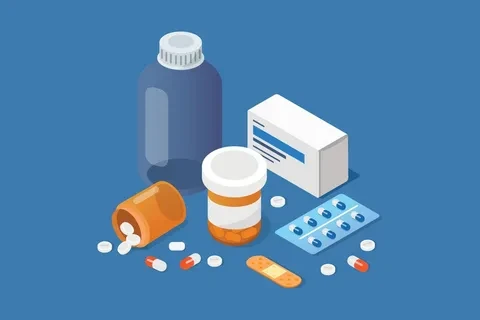Medicare Drug Plan (Part D)

Everyone who has Medicare should have creditable prescription drug coverage:
- If you join a Medicare Advantage Plan (Medicare Part C) you probably will not need a separate Medicare Prescription Drug Plan (PDP).
- If you have creditable coverage from another source like an employee plan you may not need a PDP (read your employer plan carefully). However if you lose your creditable prescription drug insurance you have to sign up for an approved Medicare PDP within two months of losing your insurance (63 days)if you are not within your initial enrollment period.
- If you have original Medicare and/or have a Medicare Supplement Insurance policy, you should have a separate Medicare Prescription Drug Plan (PDP). If you do not have a PDP when you are first eligible for Medicare (see Medicare Initial enrollment) you will likely have a late enrollment penalty fee added to your monthly premium if you choose to join later this penalty will be in place for as long as you have Medicare.
- Penalty formula – multiply 1% of national base beneficiary premium ($33.13 in 2015) by the number of full uncovered months that you were eligible for Medicare Part D and did not have other credible drug coverage and round it to the nearest $10.
- PDP’s are sold and run by private insurance companies and will vary in premium costs and drugs covered and costs of those drugs. (drug costs are based on the tier the prescription drug is placed). For example one company might list your drug in Tier 2 and another might list it in tier 3, the company that lists it in tier 2 has a smaller co-pay for that drug than the one who lists in tier 3.
- You must live in a plan’s service area to join and you must have Medicare Part A or Part B.
- You can switch your PDP plan to a 5 star rated PDP once in your life (this special enrollment period is in effect December 8, 2015 – November 30, 2016.
- Most PDP plans have preferred pharmacies, check your providers plan.
- There can be a higher premium for those with taxable incomes higher than $85,000 if you are single and $170,000 if married and file jointly. This “extra premium” is usually deducted from your Social Security. The extra premium goes to Medicare and NOT the insurance company that . Your monthly premium for a PDP is usually paid directly to the private insurance holding your PDP. If your income is lowered or you disagree with the “taxable income” amount used for this equation can visit socialsecurity.gov or call Social Security, 1-800-772-1213.
- Most PDP’s have what is called a donut hole (when the combined costs of your co-pay, the amount the plan paid and any deductible you paid reaches an amount set by Medicare (2016 $3,310). When you reach this amount you have to pay 45% of the plan’s cost for covered brand drugs and 58% of plans cost of covered generic brands until you reach the catastrophic stage ($4,850 out-of-pocket WHICH INCLUDES BOTH WHAT YOU PAID AND THE AMOUNT THE INSURANCE PAID). You then return to having a co-payment for the rest of the year. Some plans offer additional cost reductions but they may charge a higher monthly premium, check with your plan to see if your drugs are covered.
ALL INFORMATION CAN BE FOUND IN DETAIL IN YOUR ANNUAL MEDICARE BOOK OR ON-LINE AT MEDICARE.GOV. YOU CAN ALSO CALL 1-800-MEDICARE
Medicare Drug Plan Part D and Its Importance
Understanding the Late Enrollment Penalty for Medicare Part D


Choosing the Right Medicare Part D Plan: Factors to Consider
Medicare Part D plans are offered by private insurance companies, and they vary in costs, drugs covered, and the costs of those drugs. It’s important to compare plans based on:
- Premium costs
- Formulary (list of covered drugs)
- Cost-sharing requirements (copayments, coinsurance)
- Pharmacy networks
- Customer service ratings Different plans might place the same drug in different cost tiers, affecting your out-of-pocket expenses. Ensure that the plan you choose aligns with your medication needs and budget.
Special Enrollment Periods and the Five-Star Rating Switch Option
Income-Related Monthly Adjustment Amount (IRMAA) for High-Income Earners
Individuals with higher taxable incomes might pay an extra premium for Medicare Part D, deducted from Social Security benefits. This additional amount is based on income thresholds ($85,000 for singles and $170,000 for married couples filing jointly). If your income decreases or you disagree with the amount, you can request a review through Social Security. This adjustment ensures that those who can afford to pay more do so, helping to subsidize costs for other beneficiaries.
Navigating the Donut Hole Coverage Gap and Catastrophic Coverage

